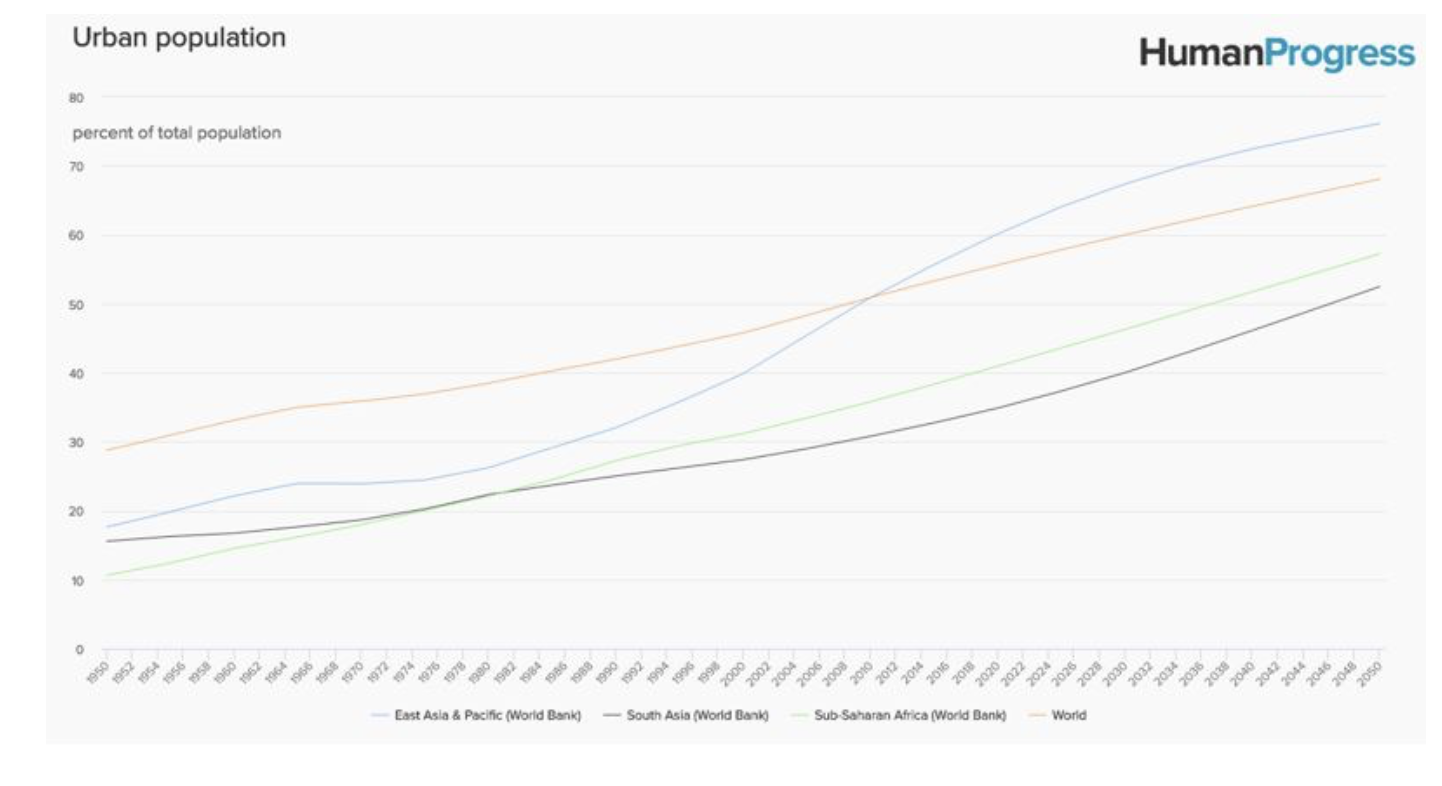Town versus country may seem like a question of personal preference, but it’s really a matter of human progress. Cities are the engines of human liberation and economic growth. Urbanisation is also good for the planet, for people in the cities have a smaller environmental footprint than people in the countryside. And, as such, it should be welcomed and encouraged.
Traditionally, between 80 and 90 per cent of humanity lived in rural areas and worked in agriculture. As late as 1900, 40 per cent of Americans worked on farms. Today, less than 2 per cent do. Prior to mechanisation, farm work was physically exhausting and poorly paid, which helps to explain why people started to move from the countryside to the cities. At first, most found employment in manufacturing. Today, they tend to occupy better paid and physically less strenuous jobs in the service sector.
In the past, cities were the engines of liberation. In Medieval Europe, for example, serfs who escaped from their masters and lived in a city for “a year and a day” became free from servitude. Hence the German saying, “Stadtluft macht frei” or “city air makes you free”. Cities also offered better schools, leading to higher levels of literacy and political consciousness and, in time, democratisation.
At first, cities were less sanitary than the countryside. Unprepared for the huge influx of people, they could not cope with overcrowding and the spread of contagious diseases. Over time, urban infrastructure caught up with population growth and today cities provide superior medical care, leading to life expectancy that is, typically, a few years higher than it is in the countryside.
Urban centres have been more welcoming of different lifestyles and beliefs since time immemorial. That was of particular significance to sexual and religious minorities, who were more broadly tolerated in cities, such as renaissance Florence and early modern Amsterdam, than they would have been in more intimate rural settings.
Finally, cities offered and continue to offer a greater variety of amusements, leisure activities and intellectual stimuli. As Samuel Johnson famously put it in 1777, “Why, Sir, you find no man, at all intellectual, who is willing to leave London. No, Sir, when a man is tired of London, he is tired of life; for there is in London all that life can afford.”
Karl Marx may have been right for once when he wrote in The Communist Manifesto, “The bourgeoisie has subjected the country to the rule of the towns. It has created enormous cities, has greatly increased the urban population as compared with the rural, and has thus rescued a considerable part of the population from the idiocy of rural life.” Harsh, perhaps, but true.

In many countries today, cities are the centres of innovation, engines of growth, and home to the richest segment of the population — just think of Delhi, London, New York, Shanghai, Seoul and Tokyo. In fact, the World Bank found that “No country has grown to middle income without industrialising and urbanising. None has grown to high income without vibrant cities.”
Yet as late as 1950, a mere 29 per cent of humanity lived in the cities. In 2018, it was 55 percent. In 2050, it is projected, 68 percent of people on Earth will be city-dwellers. In sub-Saharan Africa, 40 percent of the population live in cities — a figure that will rise to 57 percent in 2050.
Many of the environmental advantages of urbanisation are derived from living spaces being condensed. For example, electricity use per person in cities is lower than electricity use per person in the suburbs and rural areas. Condensed living space also allows for more of the natural environment to be preserved. In a suburban or rural environment, private properties are spread out, because land values are relatively low. So, more of the natural environment is destroyed. In cities, property values are higher and space is used more efficiently. That means that more people live in the same square mile of land than in the rural areas.
Another environmental advantage of cities compared to rural areas is a decrease in carbon emissions per person. In a rural or suburban area people normally use their own vehicles to drive to work or anywhere else. Due to congestion, the use of personal cars in the city is much less attractive. More people use public transportation instead and that means that less carbon dioxide gets released into the atmosphere.
None of the above advantages of urban life should be read so as to deny the loveliness of the countryside, which is made all the lovelier by having more animals and fewer people living in it.








